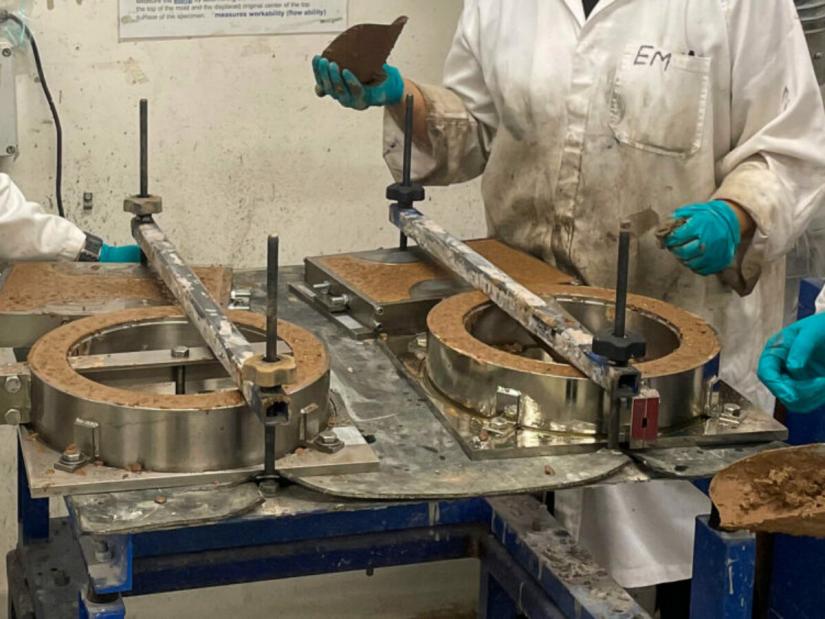UTS researchers will partner with industry to develop lower carbon concrete using Australian calcined clay.

Calcined clay concrete sample preparation at UTS Boral Centre for Sustainable Building.
The University of Technology Sydney (UTS) has joined forces with the SmartCrete Cooperative Research Centre (CRC), Australian construction materials company Boral Limited (Boral), Transport for NSW and environmental technology company Calix Limited (Calix) to develop lower carbon concrete using Australian calcined clay.
The two-year, $1.67 million research project, co-funded through the Commonwealth’s CRC Program, focuses on developing, testing and optimising concrete mixes incorporating calcined clay as an alternative to Ordinary Portland Cement, targeting a substantial reduction in CO2 emissions while meeting Australian building and construction standards.
A first batch of Boral clay has been successfully calcined by Calix’s unique renewably powered electric calcination technology, demonstrating the potential of the approach to produce a low carbon intensity SCM.
Boral’s Head of Sustainability and Innovation Dr Ali Nezhad highlights the industry’s growing demand for low embodied carbon concrete and the importance of innovative solutions to ensure the concrete industry is well positioned to meet the increasing demand in the long term.
The latter is particularly important amidst anticipated long term constraints on traditional Supplementary Cementitious Materials (SCMs) like fly ash and slag, as Australia transitions from coal-fired power generation.
"We are committed to supporting our customers in their decarbonisation journey. Part of this commitment is to ensure we are well positioned to meet the growing demand for lower carbon concrete in the long term," said Dr Ali Nezhad.
“As supplies of traditional SCMs like fly ash and slag become more constrained in the long term, finding reliable alternatives SCMs is crucial. With clay being one of the most abundant materials in Australia, calcined clay offers a promising solution. We are excited to collaborate with SmartCrete CRC, UTS, Transport for NSW and Calix to explore its potential and bring this technology to the Australian construction industry,” he said.
UTS’s research lead Dr Paul Thomas is collaborating with Boral to establish calcined clay as a readily available and viable low carbon concrete binder. Together, they will benchmark its performance against the materials properties such as durability and sustainability of existing cement technologies.
Dr Paul Thomas states that “combining UTS’s research capabilities with Boral's industry experience ensures a comprehensive evaluation of calcined clay. This will not only establish its viability as a low carbon binder but also pave the way for its practical implementation within the construction industry.”
Dr Salwan Alassafi, General Manager of Research and Development at Calix, emphasised Calix’s commitment to deliver effective decarbonisation solutions for the global cement and lime industries.
“In addition to capturing unavoidable process emissions from traditional cement, the use of SCMs is an important decarbonisation pathway for the industry. Producing SCMs with renewably powered electric calcination is an exciting prospect to avoid both energy and process emissions,” said Dr Salwan Alassafi.
SmartCrete CRC CEO Clare Tubolets emphasises the collaboration’s significance in driving sustainable change.
“The partnership with Boral, UTS, Transport of NSW and Calix is not just about research – it is about actionable change. By leveraging our combined expertise, we aim to accelerate the adoption of calcined clay concrete, thereby significantly contributing to the sustainability goals of the construction sector,” said Clare Tubolets.

